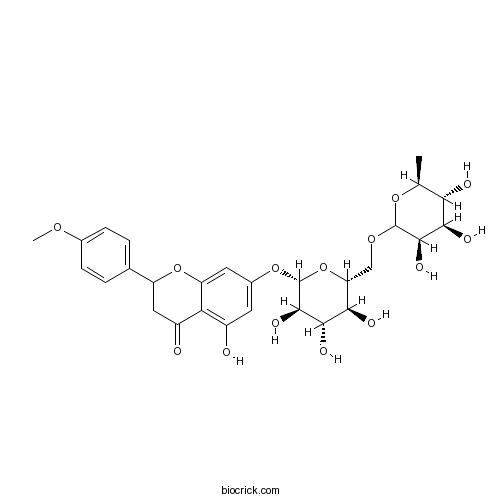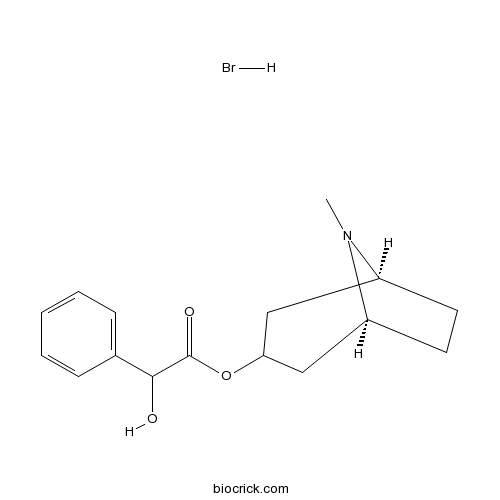Mentha spicata
Mentha spicata
1. The products in our compound library are selected from thousands of unique natural products; 2. It has the characteristics of diverse structure, diverse sources and wide coverage of activities; 3. Provide information on the activity of products from major journals, patents and research reports around the world, providing theoretical direction and research basis for further research and screening; 4. Free combination according to the type, source, target and disease of natural product; 5. The compound powder is placed in a covered tube and then discharged into a 10 x 10 cryostat; 6. Transport in ice pack or dry ice pack. Please store it at -20 °C as soon as possible after receiving the product, and use it as soon as possible after opening.
Natural products/compounds from Mentha spicata
- Cat.No. Product Name CAS Number COA
-
BCN3327
Didymin14259-47-3
Instructions

-
BCN5893
Rosmarinic acid20283-92-5
Instructions

-
BCN2356
Diosmetin520-34-3
Instructions

-
BCN8949
(-)-Carvone6485-40-1
Instructions

Chemical composition, antioxidant, antimicrobial and Antiproliferative activities of essential oil of Mentha spicata L. (Lamiaceae) from Algerian Saharan atlas.[Pubmed: 29970065]
Mentha spicata (M. spicata) is a member of Lamiaceae that spreads mainly in the temperate and sub-temperate zones of the world. It is considered as a rich source of essential oils, which is widely used in pharmaceutical industries and food production. The objectives of the current study were to evaluate chemical composition, antioxidant, antimicrobial and antiproliferative activities associated with the essential oil of M. spicata cultivated in Algerian Saharan Atlas.
Antidiabetic effect of spearmint in streptozotocin-induced diabetic rats.[Pubmed: 29769013]
In this work the effect of Mentha spicata (L.) (M. spicata) aerial part aqueous extract (A.P.A.E) at a dose of 20 mg/kg body weight on blood glucose levels has been demonstrated in normal and streptozotocin (STZ) diabetic rats. Additionally, a preliminary phytochemical screening for various bioactive constituents was realized and a dosage of polyphenols and flavonoid has been done. Moreover, the histopathological changes in liver and pancreas have been evaluated both in normal and STZ diabetic rats. The effect of M. spicata aqueous extract to improve glucose tolerance in normal rats was also evaluated. In normal rats, both a single and repeated administration of the A.P.A.E (20 mg/kg) had not showed a significant reduction in blood glucose levels. However, repeated oral administration of M. spicata aqueous extract showed a significant blood glucose lowering effect (p<0.0001) in STZ diabetic rats. The blood glucose lowering activity of A.P.A.E was comparable to glibenclamide treatment at the dose used. Also, histopathological study has showed the better act of M. spicata in pancreas and liver. Moreover, the oral glucose tolerance test, demonstrated the ability of the aqueous extract (20 mg/kg) to improve the increase on blood glucose levels in normal treated rats. In the current study, no significant changes in body weight in normal and STZ rats has been shown. In addition, the preliminary phytochemical screening of M. spicata A.P.A.E. showed the presence of several beneficial compounds including polyphenols, flavonoids, anthraquinons, tannins, saponins, sterol, glucides, glycosides, terpenoids and reducing sugars. Furthermore, result of dosage of some bioactive compounds present in this plant showed an important value of polyphenol (424.37±43.93 mg EAG) and showed also a non-negligible content of flavonoid. (9.74 ±0.39 mg EQ/g of extract). In conclusion, aqueous M. spicata extract exhibits an interesting antidiabetic effect in streptozotocin rats.
Chemical composition and assessment of larvicidal and repellent capacity of 14 Lamiaceae essential oils against Aedes albopictus.[Pubmed: 29717370]
In the current laboratory study, 14 essential oils (EOs) derived from 12 Lamiaceae plant species and their major components were screened for their larvicidal and repellent properties against Aedes albopictus, an invasive mosquito species of great medical importance. The results of toxicity bioassays revealed that the EOs from Thymus vulgaris, Ocimum basilicum, Origanum dictamnus, Origanum majorana, and Origanum vulgare, as well as their major components (terpenes), namely thymol, carvacrol, p-cymene, and γ-terpinene exerted the highest larvicidal effect. Essential oils from Mellisa officinalis, Origanum dictamus, Mentha spicata (chem. piperitenone epoxide), Origanum majorana, and Satureja thymbra were the most potent repellents, with the last two assigned as the best ones. Among the terpenes tested, piperitenone epoxide, carvacrol, thymol, and piperitenone provided the highest level of protection against Ae. albopictus adults. Chemical analysis revealed the presence of a high number of terpenes in the EOs, while in most cases, the biological action of the tested EOs and their major components was in consistency. The most effective EOs and terpenes that were identified through the current laboratory bioassays could be used as alternative agents to control larvae and repel adults of Ae. albopictus.
Evaluation of Lavandula stoechas L. subsp. stoechas L., Mentha spicata L. subsp. spicata L. essential oils and their main components against sinusitis pathogens.[Pubmed: 29485971]
Lavandula stoechas subsp. stoechas and Mentha spicata subsp. spicata are used for the treatment of sinusitis in Turkish folk medicine. The components of essential oils obtained by hydrodistillation were determined by gas chromatography-flame ionization detector (GC-FID), gas chromatography/mass spectrometry (GC/MS), and thin layer chromatography (TLC). Major components of L. stoechas and M. spicata oils were determined as camphor (46.7%) and carvone (60.6%), respectively. The antibacterial activity of essential oils and their main components were tested against the common selected sinusitis pathogens Streptococcus pneumoniae, Streptococcus pyogenes, Staphylococcus aureus, Haemophilus influenzae, Moraxella catarrhalis, and Pseudomonas aeruginosa using in vitro agar diffusion, microdilution, and vapor diffusion methods. As a result, the tested plant materials, which are locally and natively used against sinusitis, were relatively mild antibacterial (in vitro MICs 310-1250 μg/mL) in action. To use essential oils and their components safely in sinusitis therapy, further detailed in vivo experiments are needed to support their efficacy.


